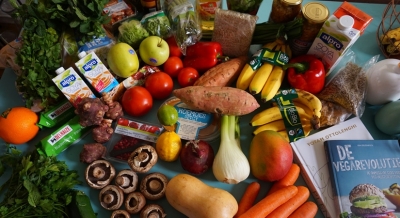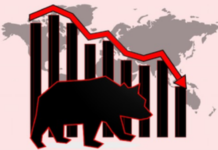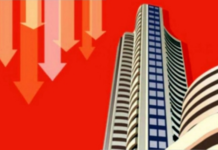San Francisco— Soaring grocery, gas, and transportation prices remain a factor in US household pockets, with the price of flour in the run-up to Thanksgiving remains a matter of concern here. But the October inflation print at 7.7 per cent triggered a boom rally on the equity markets.
Despite a 40 year inflation spike, equity markets are going ballistic, at the time of writing, the Dow was up a blistering 1,005 points – in the ongoing biggest rally of the year. “It certainly shows how much the markets been keyed about, worried about and wants to run on CPI if you get any sort of help here,” said John Briggs of NatWest. “It just brings up the idea of peak inflation, peak Fed… The Fed will slow and peak rather than continue to aggressively hike at 75 basis point as at a time.”
The bear market rallies, even as heating/distilled oil prices on the cusp of winter, is up 68.5 per cent year on year. Polarisation is so acute that it is stark on television channels with CNN and Fox divided in their loyalties and consequently narratives.
A slightly more politically and economically comfortable President Joe Biden, having warded off a “red wave”, to some extent, in a statement, said: “Today’s report shows that we are making progress on bringing inflation down, without giving up all of the progress we have made on economic growth and job creation.”
“My economic plan is showing results, and the American people can see that we are facing global economic challenges from a position of strength.”
He added that “it will take time to get inflation back to normal levels – and we could see setbacks along the way – but we will keep at it and help families with the cost of living.”
Equally, House Minority Leader Kevin McCarthy is making his bid to oust House Speaker Nancy Pelosi by January.
New York Times reported that while price increases are still rapid and painful for many households, they are finally beginning to show signs of turning a corner. The inflation index picked up by 7.7 per cent in the year through October, less than the 7.9 per cent that analysts had expected and down from 8.2 per cent in the year till September.
After stripping out food and fuel, both of which jump around in price, a “core” inflation index decelerated to 6.3 per cent on an annual basis, down from 6.6 per cent in the prior reading. And core price gains decelerated sharply on a monthly basis.
The underlying details of the report were also encouraging: A slowdown in goods inflation that economists had long anticipated finally showed up, with prices for used cars and clothing falling markedly last month. And in services, part of a slowdown came from an expected decline in medical care costs, but some discretionary purchases also became cheaper, with a fall in airfares and sporting event tickets.
Here are the takeaways from the latest data:
The Consumer Price Index was up 7.7 per cent in October compared with the year before, down from an 8.2 per cent annual pace in the previous month.
After stripping out food and fuel prices, which jump around, the core index was up 6.3 per cent, down from 6.6 per cent previously.
On a monthly basis, inflation slowed notably in October after stripping out food and fuel, with prices climbing just 0.3 per cent between September and October, down from 0.6 per cent in the previous report. That was the slowest since September 2021.
October’s slowdown came even as gas prices helped to boost the overall number: Gasoline prices increased 4 per cent last month, though natural gas fell 4.6 per cent. Overall, energy costs were up 1.8 per cent.
Housing inflation makes up a big chunk of the overall price measure, and it is still running hot. Rent of primary residence in October climbed 0.7 per cent from the prior month, and is up 7.5 per cent over the past year. The approximate cost of renting an owned home has climbed 6.9 per cent over the past year. Those measures are expected to slow in 2023.
Food inflation is also rapid. The cost of groceries is up 12.4 per cent over the past year, and the cost of food at restaurants is up 8.6 per cent.
While some types of service costs are climbing rapidly, airfares dropped in October, declining by 1.1 per cent on a monthly basis. Wireless telephone services and sporting events also got cheaper. (IANS)







